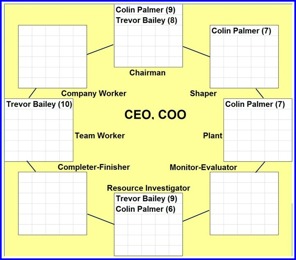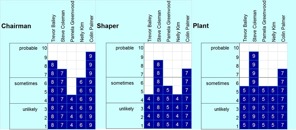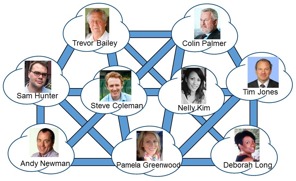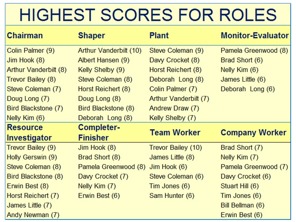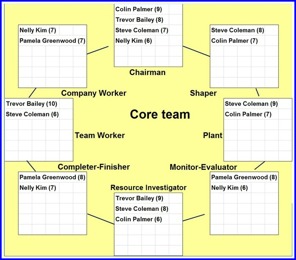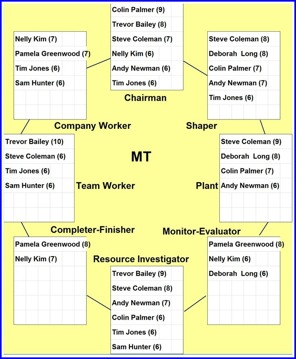LDpe's TEAM DESIGN MODULE
Below we will analyse the team design of a management team, to start with the managing directors - CEO and COO -, then composing the Core Team - responsible for running the day-to-day operation, and the full team, consisting of nine participants.
Example of TDM's application
The team we will analyse below is the MT of an international organisation. After a rough time, the new CEO and his COO have reshaped the organisation and selected a new management team.
Together, they have quite some knowledge about the potential candidate's professional qualifications, their experience and seniority.
They have asked LDpe to support them with the Team Design Module in setting up the team. Below we will follow the process of designing the teams, starting with analysing the role-profiles of the managing directors.
Then follows the Core team, that will lead the day-to-day operations at the headoffice and subsequently the complete Management Team.
Managing Directors
CEO: Colin Palmer
COO: Trevor Bayley
As we can see from the scheme above, both Colin Palmer and Trevor Bayley are strong leaders with ample seniority, probably with a large external network. Both have the potential of the chair. Because of the fact that Colin has the potential of the Shaper and the Plant role, that he, because of his impatience might fall into one of these roles and forgets that a chairman needs to be the playmaker and respects the other team members in their role. Thus, we will need a Plant in the team, strong enough to extort his role.
We see also that we will need the following complementary roles: Monitor-Evaluator, Completer-Finisher and Company Worker.
Core Team
CEO: Colin Palmer
COO: Trevor Bayley
CFO: Pámela Greenwood
CDO: Steve Coleman
Assistant: Nelly Kim
The Core Team is a 'complete team', able to run the day-to day operation.
Team profiles
You may enlarge a picture by clicking on it.
First the profiles for Chairman, Shaper, Plant
And secondly, the complementary roles
Beware: LDpe's Team Design Module is a complementary tool.
It cannot replace judgments about the fitness for organisational functions, about a candidate's adequate professional skills and/or seniority.
But it supports in analysing the completeness of a team and its preconditions for team success.
As such, the tool has been used widely in the context of organisations.
Belbin's Teamrole Concept
For a more detailed description of the Belbin Team-role Concept, please read about his theories under the chapter ‘A team’s Composition’
The Belbin team-role scores in this example are the result of real self assessments as used as input for the LDT. Therefore, the team role scores may differ the formal role he/she has in the team.
Example of a Management Team
Since most of the leaders of the organisation have been using the LDT, their Belbin-role scores are known.
LDpe can provide a report on this. See below.
When a number of candidates have been identified, based on professional qualifications and seniority, this type of report may help to identify their fitness for the necessary complementary teamroles.
The full team
The full team is also a complete team.
We must, however, recognise the importance of Pamela Greenwood and Nelly Kim for the Completer-Finisher role.





